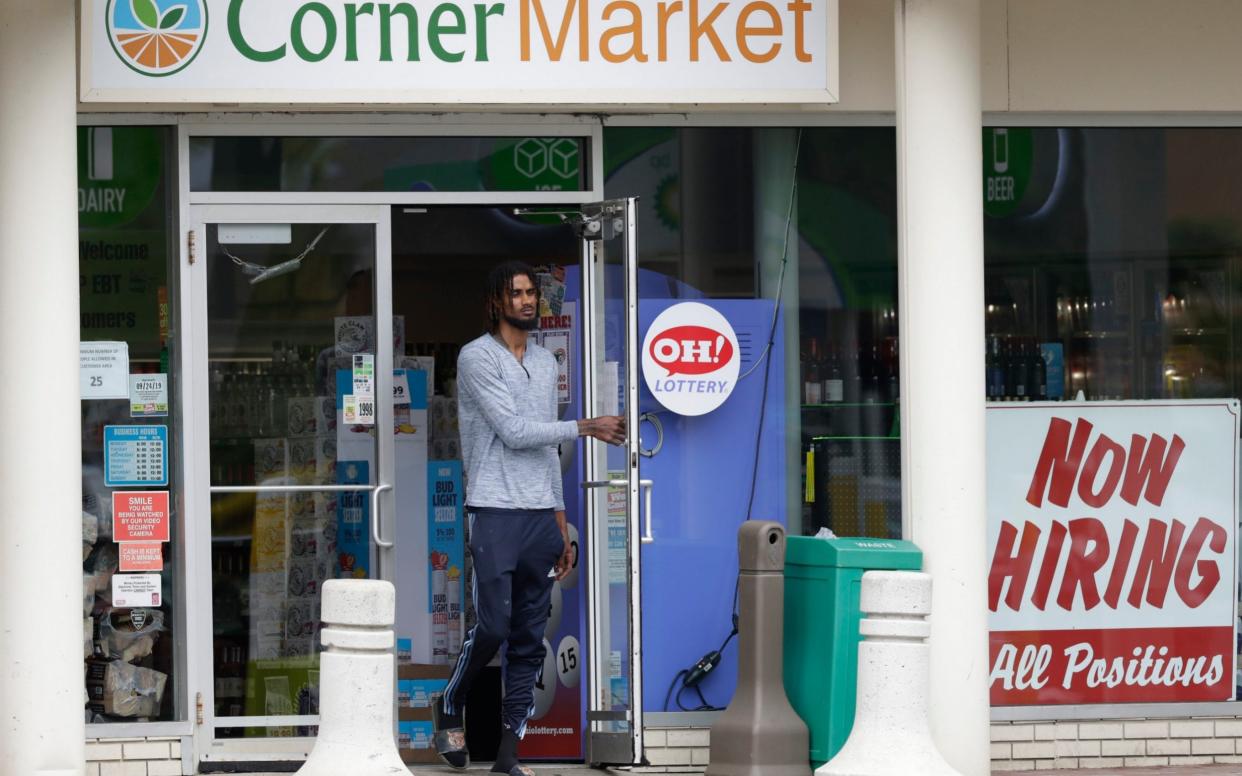Shock as US adds 2.5m jobs in May

US employers launched an unexpected hiring blitz last month, confounding expectations of more mass job losses and sparking hopes that America could stage a remarkable coronavirus comeback.
The country added 2.5m jobs in May, official figures showed - confounding predictions of a fall of 7.5m or more in one of the most dramatic forecasting errors in economic history.
Unemployment fell to 13.3pc, down from 14.7pc in April. Economists had feared the rate was set to rise as high as 20pc.
Donald Trump seized on the unexpected jobs surge, hailing it as "probably the greatest comeback in American history" as he campaigns for reelection in November.
The President predicted further rapid growth as more states come out of lockdown, adding that he expects the economy to recover even more quickly than the rapid "V-shape" bounce that economists initially hoped for before growing increasingly gloomy.
He said: "This is better than a 'V' - this is a rocket ship."
Meanwhile economists scrambled to rewrite their predictions for the US and world economies.
James Knightley, of ING, said: "Somehow the US jobs market has come back from the brink.
"It suggests the American economy can bounce back very vigorously and we all need to massively revise up our economic projections."
The Dow Jones and S&P 500 jumped 2.7pc and 2pc respectively after the surprise figures, while the technology-focused Nasdaq index climbed to a new record high. The FTSE 100 rallied by 2.25pc on hopes that Britain could also recover far more quickly than feared.
Positive US sentiment was bolstered by Bureau of Labor Statistics figures showing evidence that workers laid off in the hardest-hit industries are being rehired in significant numbers.
The leisure and hospitality industries added more than 1.2m jobs in the month as companies began to reopen their doors.
Retailers accounted for 367,000 more, while renewed activity on building sites boosted employment in construction by 464,000. Another 391,000 came in health care and social assistance.
The surge suggests that massive stimulus measures to support the unemployed have paid off. America has pumped $2 trillion into protecting is economy since the pandemic struck, with most Americans sent a cheque for $1,200 to help them through the crisis.
Some economists have already started questioning whether when the dust has settled this support could come to be seen as overkill. Seema Shah, of Principal Global Investors, said: "Today's data suggests that the US economy is more resilient than expected.
"It also raises the question: does the US really need as much policy support as it is receiving?"
Despite the surge in hiring, analysts noted there is still a long way to go before employment recovers to where it was before the pandemic struck.
Earlier this year the US jobless rate stood at a record low of 3.5pc. Since then more than 40m workers have been laid off.
Neil Williams, of Federated Hermes, said: "The first rise since the virus, [these numbers] give hope that as some US states ‘reopen’, gradually returning furloughed workers may be outnumbering those losing jobs.
"Hopefully, this can continue, but delivering the US economy to health still faces some very high hurdles.
“Taken together, net job losses since February have been eye watering, and far more striking than in recent recessions."
Some industry suffered another fall in employment, including the mining and logging industries, transport, and warehousing.
Public sector jobs are also disappearing, with a drop of 585,000 jobs in part driven by local governments axing teachers while schools are shut.
There are also fears that some industries will take a long time to recover to their previous size, if they ever do manage to fully repair the damage.
Gregory Daco, of Oxford Economics, said: "We foresee a labour market recovery in two phases: rapid growth in the second half of 2020 as economic activity rebounds from very low levels, followed by a more gradual recovery in 2021-2023."
Although 60pc of lost jobs will come back rapidly, Mr Daco still expects unemployment to stand at between 8pc and 10pc by the end of the year.


